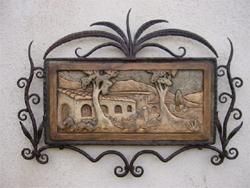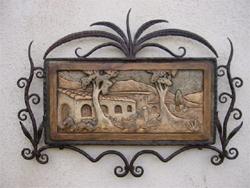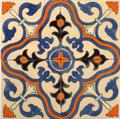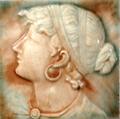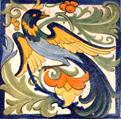July 9–November 5, 2005
The American Museum of Ceramic Art is proud to present Laying the Foundation: American Art Tile. Major U.S. tile manufacturers will be represented by more than 300 tiles from the collection of Norman Karlson, Los Angeles resident and author of American Art Tile: 1876 through 1941 and a forthcoming four-volume encyclopedia on the history of ceramic tile. Groundwork for the exhibit will consist of Middle Eastern and European tiles exemplifying designs and techniques that influenced the development of American’s own tile industry. The exhibit will take us through the evolution of America’s love affair with tile, from the introduction of European artisans who started the fledgling East Coast tile production companies to the burgeoning tile production of the Middle States at the turn of the century, and continuing through Spanish influence within California’s hot tile market. Laying the Foundation: American Art Tile will also include a separate component of contemporary tiles, both “revival” and “cutting-edge.”
Early examples of ceramic tile can be traced back to ancient Egypt, China, and Babylon; however, the tradition of tile making as we know it began with 13th century Moroccan zellige (mosaic) tile work. Later, other Middle East cultures added important technical knowledge to the process of creating architectural tile. During the Renaissance period, Italian craftsmen concentrated on relief tiles, while throughout the rest of continental Europe further diversification of tile-making techniques continued to spread, culminating in England, which had the largest influence on American tile production. The initial success of the American tile industry was dependent on the ceramic craftsmanship of immigrants who first began production in New England, using the styles and techniques of their homelands. As the nation grew, tile companies flourished and artisans began adopting a more American style of decoration, influenced by fresh history and a new environment. As with all American industrialization, the movement was from the east to the west coast. Along the way, tile became an essential element of the Arts and Crafts movement, which lasted in America through the mid 1920s. Eventually reaching the West Coast, Californian tile production favored Moorish or Aztec designs compatible with the Spanish architecture, popular at that time. Today’s strong interest in the Arts and Crafts movement, as well as the Spanish influence, has prompted a revival of tile making, with an emphasis on replicating those styles popular in the 20s. Come see the progression of tile throughout the past century and the reason for its resurgence in today’s architecture in Laying the Foundation: American Art Tile.
